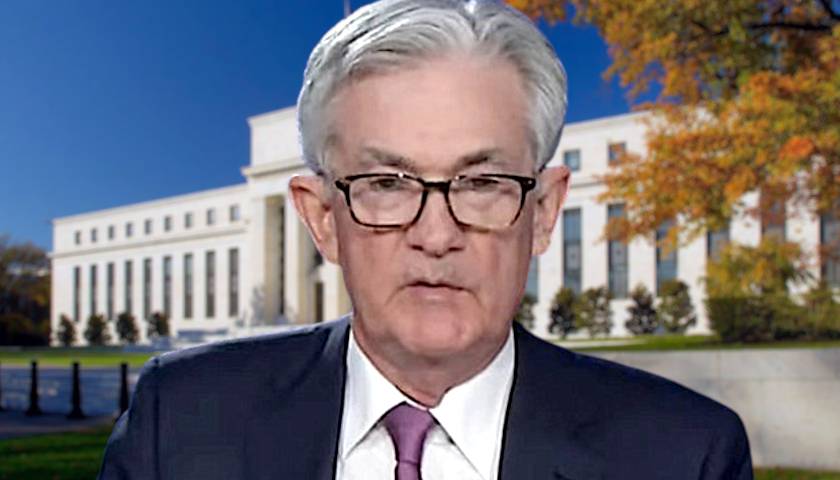by Myra Adams
We’ve all been deluged with lists of 2020 winners, losers, and reasons why everyone is saying good riddance to this challenging, tragic, chaotic, and unusual year.
This one has a different slant: Five “never before and never again” phenomena unique to 2020. (Yes, I know that one must “never say never,” but the following qualify as two-headed freaks of politics and economics.)
We Saw the First President to Be Impeached and Then Run for Reelection
Notably, Trump’s status as only the third U.S. president to be impeached was practically never mentioned during the campaign. (Obviously, both Democrats and Republicans had good reasons to conveniently forget.) But still, the notion of an impeached president running for reelection after winning the nomination of a major party, virtually uncontested, is a political abnormality befitting the plot of a Netflix series. Over time, historians will view this feat as a highly irregular chapter in presidential history, likely never to be repeated.
Both the Losing and Winning Presidential Candidates Won More Popular Votes Than Any President in U.S. History
Therein lies the factual justification for President Trump’s frequent insistence that his winning a record-breaking 74.2 million votes is why he “won” the election. The problem is President-elect Joe Biden holds the overall record with 81.2 million votes. Still, when comparing the number of presidential ballots cast over the last 20 years, Trump’s popular vote “loss” places him in the winner’s circle. Also, remember that he blew past his 2016 total of 62.9 million votes.
It is essential to recognize that never before have presidential candidates won over 70 million votes. Clinton in 2016 won 65.8 million. Obama in 2012 won 65.9 million with 69.4 million in 2008. Bush in 2004 won 62 million, and 50.4 million in 2000.
In 2020, voter participation at 66.7% of the electorate accounts for Trump and Biden’s historical totals. How does that percentage compare to the last five presidential elections? Take a look:
2016 – 61.4%
2012 – 61.8%
2008 – 63.6%
2004 – 63.8%
2000 – 59.5%
Whether voting participation at 66.7% is a 2020 “never again” abnormality is a good question. Indeed, it was due to the extreme partisanship and dire circumstances facing the nation – which one hopes will never be repeated. But for clues, watch the 2022 midterm elections. During the 2018 midterms, there was a record participation rate of 53.4%, up from 41.9% in 2014, and 2018 heralded 2020’s record turnout.
The First President From the “Silent Generation”
At age 78, Joe Biden is the oldest president to be elected and the first from the “Silent Generation” born between 1928 and 1945.
After Dwight Eisenhower, every postwar president was born either part of the Greatest Generation (1901 to 1927) or a Baby Boomer (1946 to 1964). The switch between these two large and influential generations occurred in 1992 with no going back — until Biden broke the chain.
Here are the seven Greatest Generation presidents in order of serving and their birth year:
John Kennedy: 1917
Lyndon Johnson: 1908
Richard Nixon: 1913
Gerald Ford: 1913
Jimmy Carter: 1924
Ronald Reagan: 1911
George H. W. Bush: 1924
Followed by five Baby Boomer presidents:
Bill Clinton: 1946
George Bush: 1946
Barack Obama: 1961
Donald Trump: 1946
Back to Silent Generation:
Joe Biden: 1942
In modern American presidential history, once a generation comes of age and gains a White House foothold, that generation serves for decades — even fending off attempts to go backward. For example, in 1996, the Greatest Generation’s Bob Dole lost to Bill Clinton. Then in 2008, the Silent Generation’s John McCain lost to Barack Obama. Whether or not the Baby Boom generation has run its presidential course remains to be seen. (VP-elect Kamala Harris was born in 1964 at the tail end.) And for now, Joe Biden’s generation is no longer “silent” in the White House, with the “going back” quirk just another abnormal political occurrence in a bizarre year.
Largest GDP Quarterly Decline Followed by Largest Quarterly Increase
Never in U.S. history has there been such a severe decline in the gross domestic product as we saw in the second quarter of 2020 with -31.4%.
That is what happened when a robust economy was forced to shut down due to the COVID pandemic. No previously recorded quarterly decline even comes close to what occurred during April, May, and June. For comparison, during the Great Recession (2007-2009), the largest GDP decline was “only” 8.4%, recorded during the fourth quarter of 2008. Decades earlier, in the first quarter of 1958, there was a 10% decline.
Then, in the third quarter of 2020, growth was 33.4%, a phenomenal swing.
Never before and likely never again will our nation experience such back-to-back lows to highs. Meanwhile, recovery is happening, albeit slowly. According to Kiplinger’s 2020 forecast, the estimated GDP growth rate will be -3.5%. Another organization predicts GDP will shrink by -3.6%.
By comparison, the GDP growth rate in 2019 was 2.3%, down from 2.9% in 2018.
A notable frame of reference was in 1932, the worst year of the Great Depression, when GDP shrunk by -13%.
Therefore, even though the U.S. economy experienced a “never before” swing between the second and third quarters, potentially ending 2020 with “only” about a -3.5% decline in growth is still terrible, but not catastrophic.
Record-Breaking One Year Increase in the National Debt
At this writing, the national debt is $27.5 trillion, up from $22.7 trillion in 2019. This one year increase of $4.8 trillion is a “never before” statistic. But “never again” is unlikely based on this number: The U.S. Debt Clock projects that in 2024, at current rates of spending, the national debt will increase to $49.1 trillion. That averages to a $5.4 trillion increase every year over the next four years.
In perspective, and for now, the current one-year debt increase is alarming. For example, in 1980, the debt was $934 billion. Ten years later, in 1990, it had jumped to $3.2 trillion. Then in 2000, it was $5.6 trillion. By 2004 it climbed to $7.5 trillion. And in 2017, the debt had crept up to $20.2 trillion. Currently, and only three years later, the national debt has increased by $7.3 trillion to $27.5 trillion and climbing fast.
Remember when Republicans were the party of fiscal responsibility? Now, get ready for the “tax and spend” Democrats.
Though 2020 has been a year with numerous “never again/never before” events and occurrences, the one-year national debt increase of $4.8 trillion represents a future acceleration due to off-the-charts spending that will continue unabated — and could be our national undoing.
– – –
Myra Adams is a media producer and writer with numerous national credits. She served on the McCain Ad Council during the GOP nominee’s 2008 campaign and on the 2004 Bush campaign creative team. She can be reached at [email protected] or @MyraKAdams on Twitter.




